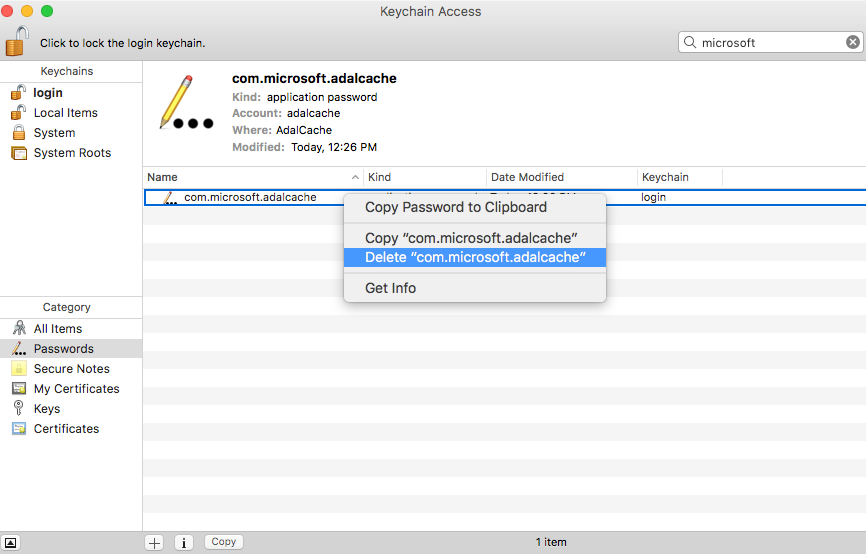Microsoft Update Mac Os High Sierra
With the release of macOS 10.15 Catalina,Office 365 for Mac and Office 2019 for Mac support macOS 10.15, 10.14, and 10.13. Moving forward, as new major versions of macOS are made generally available, Microsoft will drop support for the oldest version and support the newest and previous two versions of macOS.
You can activate an existing Office 365 subscription, or use the in-app purchase option to start a new subscription.One-time Office licenses (also known as perpetual), such as Office 2019 Home & Business, Office 2019 Home & Student, Office 2016 Home & Business, Office 2016 Home & Student, and Volume License are not compatible with Office apps downloaded from the Mac App Store. These licenses can only be used with Office apps downloaded directly from Microsoft.If a one-time Office license is used with an app from the Mac App Store, you will see a yellow message bar stating Action Required: We've detected a one-time purchase license and the app will be in reduced functionality mode.What's Office 365?Office 365 is a subscription service that ensures you always have the most up-to-date modern productivity tools from Microsoft. 
 Control+Option+Delete now triggers the CTRL+ALT+DEL sequence (previously required Fn to be pressed).
Control+Option+Delete now triggers the CTRL+ALT+DEL sequence (previously required Fn to be pressed).
- Macos High Sierra Download
- Microsoft Update Mac Os High Sierra 10 13 6
- Download Mac Os Sierra
- Microsoft Autoupdate Mac Os High Sierra
By Mike Wuerthele
Tuesday, June 13, 2017, 09:21 am PT (12:21 pm ET)
- Microsoft Word Update on macOS High Sierra. Mac / Office 365 Home. I can only assume that something happened between an OS update and an office update that.
- Apple MacOS High Sierra for Mac. Rediscover your best photos, shop faster and conveniently online, and even Siri makes its debut on the latest OS update for Mac.
In the support document, published shortly after the reveal of High Sierra, Microsoft declares that while the Office 2016 suite of applications from unreleased version 15.35 and later do work, users will still have to endure problems while waiting for a future update. According to Microsoft, 'not all Office functionality may be available' and stability problems may manifest where 'apps unexpectedly quit.'
Without delving into specific reasons why, Microsoft strongly recommends that users back up existing data before trying the software. The company is requesting that users send feedback if they choose to test High Sierra and Microsoft Office products.
Versions 15.34 —the current version —and earlier are not supported on High Sierra, and users may not be able to launch the apps at all, according to Microsoft. The 15.34 update was released on May 16
 Microsoft notes in the same memorandum that Office for Mac 2011 'have not been tested' and 'no formal support for this configuration will be provided.' Office for Mac 2011 will also cease all support from Microsoft on October 10, 2017 and no further updates in any form will be provided after that date.
Microsoft notes in the same memorandum that Office for Mac 2011 'have not been tested' and 'no formal support for this configuration will be provided.' Office for Mac 2011 will also cease all support from Microsoft on October 10, 2017 and no further updates in any form will be provided after that date.AppleInsider tested the 15.34 version and found that they appear to launch and run for a period of time, but with notably slower speeds across the board. Furthermore, the apps quit unexpectedly fairly often during use.
The same issues manifested in a Mac with High Sierra that was not migrated to APFS, eliminating that as a primary source of the errors and crashing.
The latest Office for Mac 2011 from April, version 14.7.3, was examined, and was found to be in a worse state following the High Sierra update. Crashing was even more frequent than in the Office for Mac 2016, not even accounting for a number of other user interface oddities spanning the entire suite. A standard troubleshooting step for Microsoft Office applications is to uninstall and reinstall the suite. Neither the 2011 nor the 2016 versions were any better after a complete delete and reinstall.
Macos High Sierra Download
Both the 2011 and 2016 versions of Office were usable prior to the High Sierra update. AppleInsider's testing found the 2016 suite to to be functional for the cautious under 15.34, and 2011 to be not reliable at all under High Sierra.
Microsoft Update Mac Os High Sierra 10 13 6
Update: Apple® releases macOS® High Sierra security fix for critical root vulnerability for macOS High Sierra 10.13.1 (not impacted: macOS Sierra 10.12.6 and earlier). Make sure to install this update on all macOS computers affected, as described at support.apple.com/en-us/HT208315
As reported on CNET on November 28, 2017, a major bug has been uncovered that allows root access to Mac computers running macOS High Sierra 10.13.1, leaving them fully vulnerable unless a root password is set. Lemi Orhan Ergin, the founder of Software Craftsmanship Turkey, reported the security flaw and tweeted it publicly on Tuesday, creating a zero-day scenario. This was actually first discovered and reported in Apple forums by chethan177 on November 13, but I guess not that many people read the Apple forums. (Maybe Ergin did and couldn’t wait any longer?)
Dear @AppleSupport, we noticed a *HUGE* security issue at MacOS High Sierra. Anyone can login as 'root' with empty password after clicking on login button several times. Are you aware of it @Apple?
— Lemi Orhan Ergin (@lemiorhan) November 28, 2017
Following guidance from Apple, here’s how to set a root password to regain protected root access. Disabling the Guest account is an additional suggested step along with setting a root password.
Download Mac Os Sierra
You can also take steps to further harden your Mac by delivering .mobileconfig files as SCCM Configuration Items against collections of Mac devices, adding policy-based protection. It’s simple to do this with Parallels® Mac Management for Microsoft® SCCM.
You can get a .mobileconfig file from the Apple Profile Manager, or create one by using a process created by Tim Sutton called mcxToProfile where .plist files are converted to fully crafted XML .mobileconfig files. An example given over at Github by J Björkäng for disabling the Guest account can be edited for UUID’s and your company name. This will give you a policy that can be imported into SCCM with the “Parallels Mac OS Configuration Profile from File” option. Simply copy and paste the XML example into a text-formatted TextEdit or Notepad file and save with a .mobileconfig extension.
After importing .mobileconfig files into a Parallels Configuration Item and using the SCCM workflow for Configuration Baselines, it is deployed to a collection of Mac computers to enforce the policy. For additional .mobileconfig files to consider, check out this curation at Github presented by Clayton Burlison.
Microsoft Autoupdate Mac Os High Sierra
Enforcing policy for Mac computers using Apple .mobileconfig files is one of many Mac management features that the Parallels Mac Management plugin adds to System Center Configuration Manager for full Mac management. For details including DEP support, Remote Wipe and Lock, and more, see Parallels website.